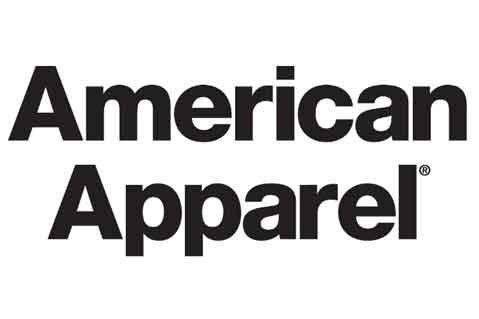News November 10, 2016
Exclusive: The Future of American Apparel
In an exclusive interview with Counselor, the president of global wholesale for American Apparel (asi/35297) confirmed that the supplier is for sale, and painted an encouraging view of the company’s future despite reports of ongoing financial difficulties.

“We are in the process of meeting with multiple parties who are interested in buying American Apparel,” said Brad Gebhard, who oversees the supplier’s wholesale and promotional product business. “The amount of interest that we’ve had regarding the brand has been very encouraging. And while there is noise in the marketplace about the future of the company, the future is quite bright from our perspective.”
Gebhard said the company is looking for a buyer that has familiarity with the apparel industry and managing brands. The goal is for a new owner to provide additional capital and collaborate on a strategic plan that will map out American Apparel’s future.
Recent news reports said that American Apparel is preparing to file for bankruptcy again, less than a year after the company filed for bankruptcy the first time and won approval to restructure the company. “We continue to evaluate offers in the standard course. As we prepare to accept an offer, we may exercise filing for bankruptcy as an instrument to release the company from remaining debt before transitioning to new ownership,” said Gebhard when asked about those reports. Beyond the drag of the company’s remaining debt, Gebhard also cited “the macro effect [on] retail” that is affecting the overall retail landscape and negatively impacting the company’s cash flow.
Gebhard said that the company is transitioning its retail garment manufacturing to outside factories and external partners, owing to shorter production runs and added technical complexity of retail items. Though he can’t speak for the future owner, Gebhard said moving manufacturing out of America “is not part of the dialog at all internally. We are American Apparel, we are Made in the United States. And that really is our point of differentiation between all the other brands.”
The company’s wholesale products continue to be manufactured internally in Los Angeles. Gebhard acknowledged the possibility that wholesale production could be outsourced in the future. The company has explored places like the Carolinas, which has an established supply chain and a past tradition of garment manufacturing. California’s current minimum wage of $10 per hour is second highest in the country (and is scheduled to escalate to $15 per hour by 2022), and Gebhard recognized the pressures such hikes would cause. “As wages continue to increase,” he said, “it’s going to put pressure on the productivity and profitability of American Apparel, and the margins for our customers, but we remain committed to domestic manufacturing and producing the highest-quality garments in the industry.”
Gebhard said that American Apparel’s wholesale division has had a “pretty good year,” with business up among its current customers. Ever since joining the company in the summer of 2015, Gebhard and his team have launched a series of initiatives to improve its operations and reliability – a collective effort that the company internally has dubbed “Wholesale 2.0.” Gebhard lists a multitude of improvements: an enhanced supply chain, better forecasting and inventory availability, significantly improved quality control, a reconfigured distribution center with an area solely dedicated to wholesale. Other efforts included improved interaction with customers, redesigned marketing materials and a new website launching next month. Says Gebhard: “This is part of the reason why we’re seeing an improvement in [sales]. We’re starting to realize the fruits of our labor in this area.”
The company’s wholesale division is on track to reach its goal of launching 10 new products this year. Gebhard (a 26-year apparel veteran who has worked at major apparel brands like Nike, adidas, Speedo and Columbia) labeled the effort “a pretty significant undertaking” considering the company revamped its launch process to foster improved collaboration across its various departments. The supplier has made a big push into sublimation-friendly garments and is launching a new “Heavy Fleece” line that takes its cues from streetwear trends.
American Apparel is currently owned by Monarch Alternative Capital and other bondholders, who obtained equity in the company in exchange for a reduction in debt as part of the company’s Chapter 11 bankruptcy. Last week, Reuters reported the company had missed two payments to unsecured creditors for a total of $2.5 million.
Paula Schneider, who took over as CEO in late 2014 following the ouster of company founder Dov Charney, resigned last month and was succeeded by Chelsea Grayson, the company’s general counsel and chief administrative officer. Gebhard cited Grayson’s M&A experience as an asset as the company goes through the sale process, and disputes the notion that she lacks the necessary experience of working in apparel. “She’s been with American Apparel for three years. She’s been in the nuts and bolts of whatever has gone on,” Gebhard said. “I can go through countless examples of when she and I had to work through countless projects, so she’s familiar with the business.”
As a wholesale entity, American Apparel over the years has derived tremendous benefit from its high-profile retail presence, and Gebhard said the company will continue to do so even as it shrinks its number of retail locations. (He adds that of the potential buyers American Apparel has talked to, most are looking to retain the retail business in addition to wholesale and online.) He added that the consistency of the company’s wholesale business allows it to stand on its own and make it an essential part of American Apparel’s future. “Wholesale is the origin of the American Apparel brand. It is the DNA,” he said. “It is the area, when we came out of bankruptcy, that continues to be a significant focus for American Apparel. Everybody recognizes that [with] this side of the business, there’s still a very strong demand.”
